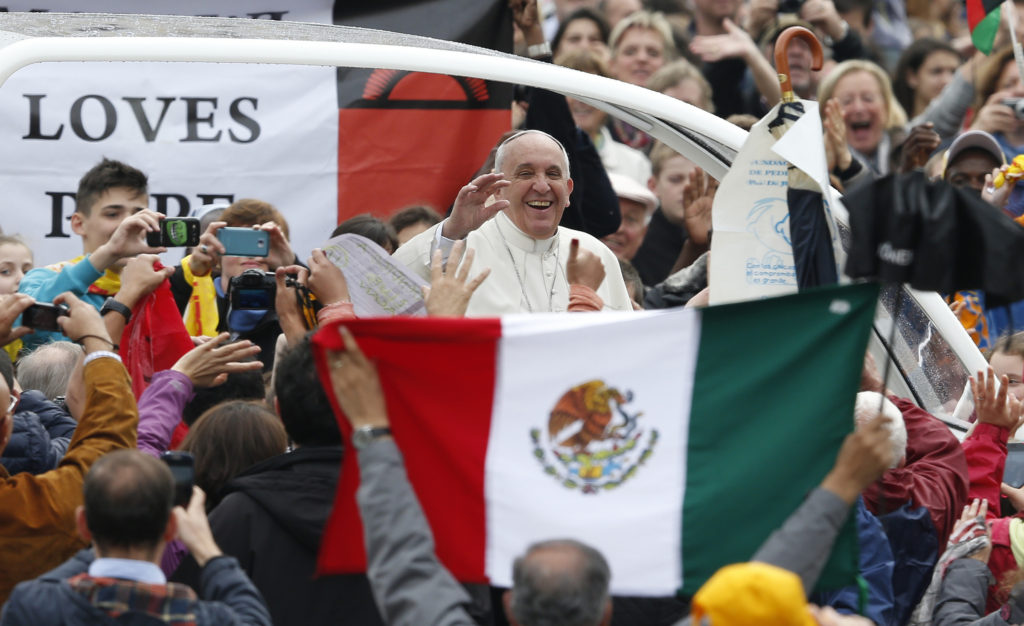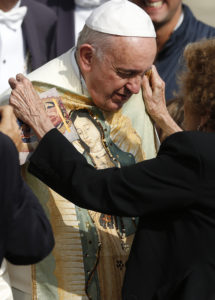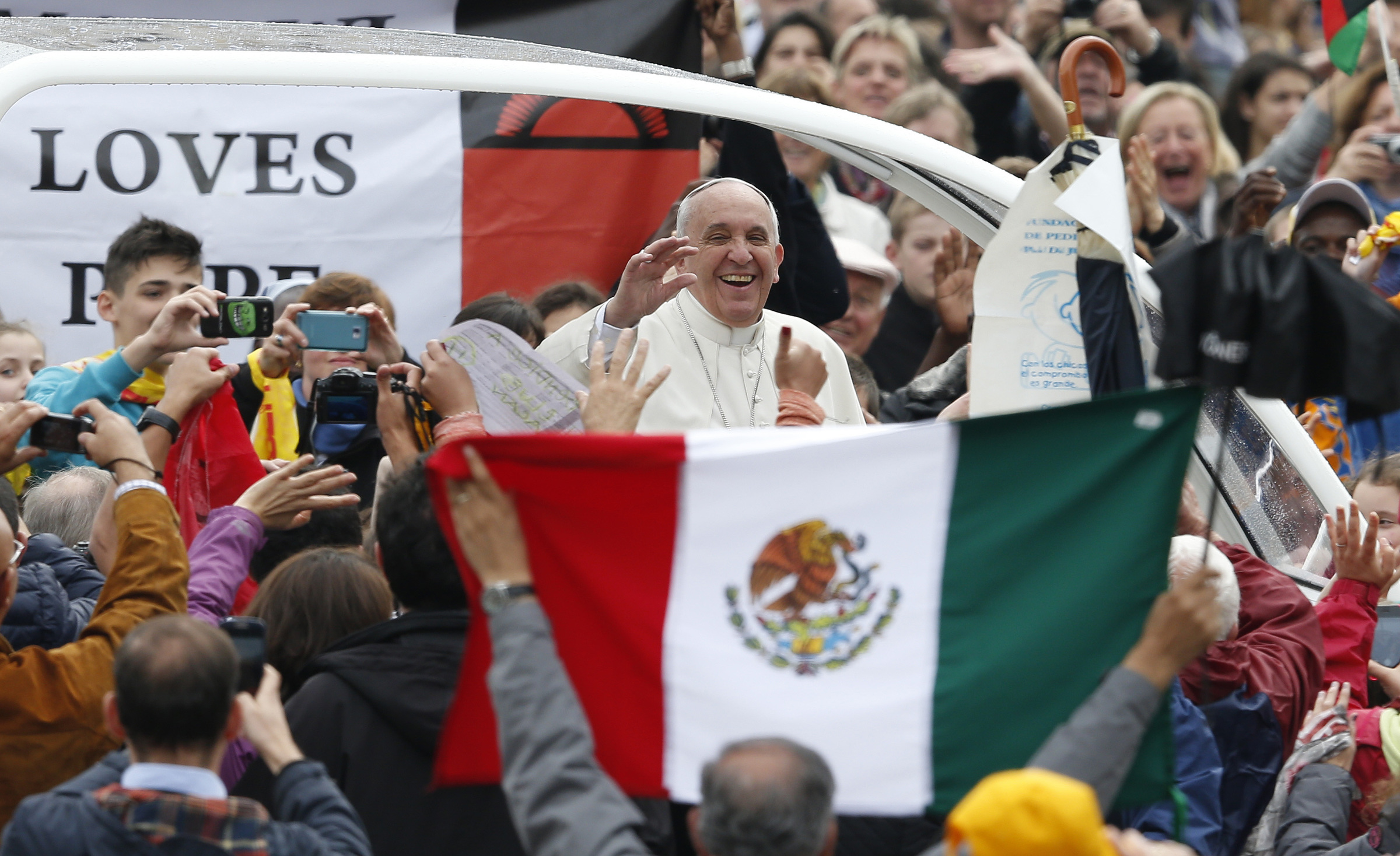
The significance of Pope Francis’ planned apostolic visit to Mexico Feb. 12-17 is not lost on the faithful in the Diocese of Phoenix.
“While Mexico has its own unique heritage and culture, we can be sure that much of what Pope Francis says and does there will have great relevance for us in Arizona,” said Bishop Thomas J. Olmsted. “I look forward to his pastoral visit to our neighbors to the south, and pray for a safe and fruitful pastoral journey by Pope Francis.”
Many local Catholics still have close ties to Mexico, and several of the scheduled stops on the Holy Father’s itinerary are physically closer to Arizona than the major cities on the East Coast he visited during his apostolic visit to the United States in September of last year. Several pilgrimage groups from the diocese are taking advantage of this geographic proximity, including a group from Immaculate Heart of Mary and St. Anthony parishes.
“It’s a very special blessing for us,” said Paula Zazueta, who is coordinating a busload of pilgrims from the two parishes.
Zazueta, a parishioner from St. Anthony, had traveled with a group of pilgrims to Mexico in 2012 when Pope Benedict XVI visited the country. When she heard of Pope Francis’ visit, she told her pastor that the parish should organize a group to see him, and he responded by charging her with the task.
Fr. Alexi Moronta, IVE, parochial vicar at the two parishes, will serve as the chaplain for the group, which is traveling by bus to Mexico City and Puebla Feb. 10-18. The group hopes to get tickets to attend the papal Masses at the Basilica of Our Lady of Guadalupe and at the stadium in Ecatepec.
En Español: Visita del Papa Francisco a México tiene significado especial para los católicos de Arizona

“Everywhere [Pope Francis] goes is to fortify and strengthen our faith,” said Fr. Moronta. “Having those two images, the Virgin of Guadalupe and the pope uniting us together to profess our faith …, it’s very fulfilling spiritually to be able to go together with a group of people who know what a pilgrimage is. A pilgrimage is a time of prayer, a time of sacrifice, but it’s also a great time of joy.”
Carmen Portela, director of the Office of Hispanic Parish Leadership Support for the diocese, said that the pope’s visit to Mexico has significance even for those Catholics who are not of Mexican descent.
“For those of us Catholics that live here in the Southwest, it’s a great gift for the pope to come and visit Mexican soil,” said Portela. “You don’t have to be Mexican to be Guadalupano. We know that the pope will stand on the dirt where the holy Virgin of Guadalupe manifested her miracle, and that will warm the faith of many, including those of us who live here and who also have the opportunity to participate directly or indirectly.”
Other stops on Pope Francis’ itinerary include Morelia in Central Mexico, Tuxtla Gutiérrez in Chiapas, home to many indigenous poor in Mexico, and Cuidad Juárez, which has been plagued by drug-related violence and a high murder rate, located along the U.S.-Mexico border across from El Paso.
“Every city he’s picked has been meaningful,” said Cristofer Pereyra, director of the Hispanic Mission Office for the diocese. “He always starts with the poor and needy and those who need a word of hope, and I think that’s why he’s chosen all of those cities.”
Fr. Moronta noted that the pope’s visit to Mexico happens during the Year of Mercy, and that the official website for the visit welcomes Pope Francis as a “missionary of mercy and peace.”
“I mean mercy is applied to those people who are the outcasts, the lowly, the forgotten,” he said. “Mexico in general has been going through a lot of turmoil. … He knows to represent Christ in the places he visits, going to those people that are the poor to whom Jesus came to preach the good news, [and] it’s not just material poverty, it’s a spiritual poverty that is in our society.”
While the Holy Father is in Juárez, he will celebrate Mass along the border. He had originally planned to come to Mexico prior to his visit to the U.S. and cross the border, to show his solidarity with migrants, but changed his plans so he could have more time to spend in Mexico.
“The Holy Father comes to Mexico to express his solidarity with every sector of the beloved people of that country with all their joys and hopes, as well as their hardships and sorrows,” said Bishop Olmsted. “His visit to Juárez, on the border with the United States, will manifest in a strong way his deep concern for the wellbeing of refugees and immigrants everywhere. Without a doubt, he will lift up their dignity and assure them of God’s love.”







